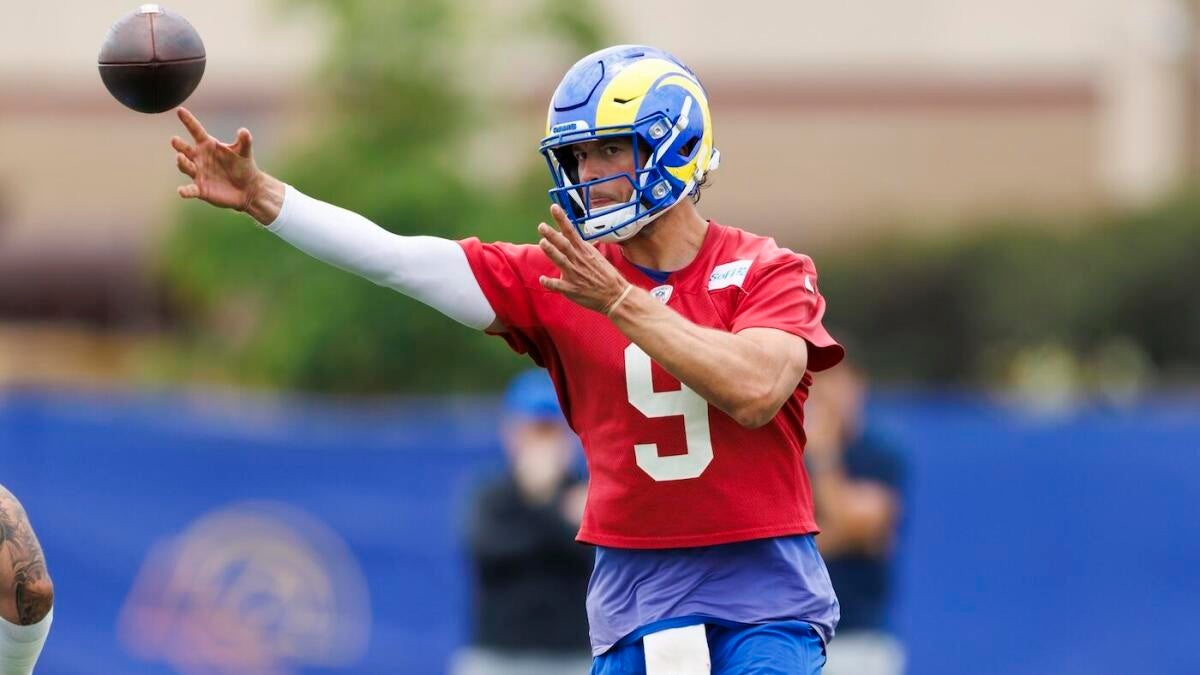The Weight of Expectations: Analyzing Matthew Stafford’s Back Issues and the Rams’ Strategic Dilemma
A Quarterback at the Crossroads
Matthew Stafford’s back soreness isn’t just a medical concern—it’s a strategic puzzle for the Los Angeles Rams. At 37, Stafford is navigating the delicate balance between veteran experience and the physical toll of a 16-year career. His back issues, while not yet classified as severe, represent a critical juncture for both the player and the franchise. The Rams’ approach to this situation will determine whether they can sustain their championship aspirations or if they must pivot to a new era.
The Anatomy of Back Soreness: More Than Meets the Eye
Back soreness is a deceptively broad term. It could range from a minor muscle strain to a more serious disc issue or chronic condition. The lack of specificity in the Rams’ public statements is understandable but also frustrating for fans and analysts alike. Stafford’s history of durability in Detroit—where he played through injuries behind inconsistent offensive lines—suggests he has a high pain threshold. However, the cumulative wear and tear of his career is now catching up with him.
The Rams’ decision to limit Stafford’s participation in training camp is a calculated move. It signals that the issue is significant enough to warrant caution but not so severe that it requires immediate medical intervention. This approach aligns with modern sports medicine, which emphasizes gradual reintegration to prevent further injury. The true test will come when Stafford increases his activity level. How his back responds to the physical demands of live practice will be the litmus test for his readiness.
Sean McVay’s Optimism: A Double-Edged Sword
Sean McVay’s public optimism about Stafford’s condition is a double-edged sword. On one hand, it reassures fans and the media that the situation is under control. On the other, it risks downplaying the severity of the issue. McVay’s comments about Stafford missing only the first “block” of training camp practices suggest a phased return, which is a prudent strategy for managing a veteran player with a known issue.
However, the Rams must be prepared for the possibility that Stafford’s back issues could flare up during the season. The team’s offensive strategy will need to adapt accordingly. This could involve a greater emphasis on the run game, a shift toward a more conservative passing approach, or even strategic rest for Stafford to preserve his health for the playoffs.
The Offensive Adjustments: A Delicate Balancing Act
A healthy Matthew Stafford is the cornerstone of the Rams’ offense. His arm talent, experience, and ability to make quick decisions are all crucial components of their high-powered attack. However, the Rams must also prepare for the possibility that Stafford’s back issues could limit him at some point during the season.
One potential adjustment is an increased emphasis on the run game. Establishing a more consistent and effective running game would alleviate pressure on Stafford and reduce the need for him to throw the ball as frequently. This would not only protect him physically but also make the Rams’ offense more balanced and unpredictable.
Another adjustment could be a shift toward a more conservative passing approach. Designing more plays that involve quick reads and short passes would allow Stafford to get the ball out of his hand quickly, minimizing the risk of taking hits. This approach would also capitalize on the Rams’ talented receivers, such as Cooper Kupp and Van Jefferson, who are adept at gaining yards after the catch.
Increased use of play-action could also be an effective strategy. By faking the run, the Rams can force defenses to commit to the line of scrimmage, creating space for receivers to get open and reducing the likelihood of Stafford being pressured.
The Long-Term Implications: A Future Beyond This Season
Matthew Stafford is under contract with the Rams through the 2026 season. His long-term health is, therefore, a significant concern for the organization. The Rams’ approach to managing his back issues now will have a direct impact on his ability to perform at a high level in the coming years.
If Stafford’s back problems become chronic and debilitating, the Rams may need to consider a succession plan at quarterback sooner rather than later. This could involve drafting a young quarterback and developing him behind Stafford or exploring other options via trade or free agency.
Navigating the Uncertainty: A Calculated Risk
The Rams’ situation with Matthew Stafford is a complex one, filled with uncertainty and potential risks. While the initial reports of back soreness are concerning, the Rams’ proactive approach to managing his condition offers some reason for optimism.
The Rams are, in essence, walking a tightrope. They must strike a delicate balance between allowing Stafford to fully recover and preparing him for the rigors of the regular season. They need to be cautious and patient, but also decisive and adaptable.
The Championship Window: A Race Against Time
The Rams are in a “win-now” mode, and Matthew Stafford is central to those ambitions. His health will dictate just how far they can go. The team’s Super Bowl aspirations hinge on Stafford being able to lead the offense effectively throughout the season and into the playoffs. The back soreness is a stark reminder that the championship window, while still open, may not stay that way forever. The Rams must navigate this challenge with both short-term competitiveness and long-term sustainability in mind, a balancing act that will define their success in the seasons to come.
In the end, the Rams’ ability to manage Stafford’s back issues will be a defining factor in their quest for sustained success. The team must tread carefully, balancing the immediate need for victory with the long-term health of their franchise quarterback. The road ahead is uncertain, but with the right strategy and a bit of luck, the Rams can continue to compete at the highest level.

